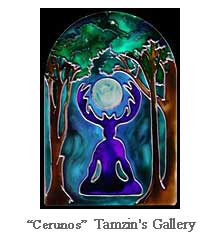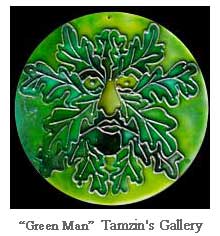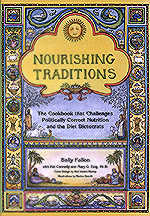Learning The Language of the Green Woman:
Plants as Allies and Teachers
by Kiva Rose
This is what I know from blood:
the first language is not our own.
There are names each thing has for itself
and beneath us the other order already moves.
It is burning,
it is dreaming,
it is waking up...
-Linda Hogan
Talking to plants is one way of talking directly to Spirit
-Rosemary Gladstar
 In the dappled shade of a silver-skinned alder the summer morning is still damp and cool. Red canyon walls surround a brilliant lapis sky and I grow dizzy with the scent of wildflowers and wind. Blooming from dark ground, the rich green of leaves of wild mint pushing up into bright streams of leaf-filtered sun. I cut each stalk to the ground, gathering them into aromatic mounds. Each time I clip through the thick, square stems their pungent scent is released anew. Placing them gently in a round woven basket I thank each one for its sacred gift of life. My basket is almost full, already populated by vibrant violet-blue flowered skullcap, red-stemmed wild bergamot, still wet watercress and a few succulent stems of purslane. Each plant around me pulsates with life, most in their prime and ecstatically peaking from flower to fruit. In this riparian canyon, nested within the wild Tularosa Mountains it is easy to see and feel the incredible life that pushes ever skyward from the body of Mother Earth. In this moment, I feel both ancient and intensely alive as I repeat the motions of my ancestral mothers. As I move in the way that women always have.
In the dappled shade of a silver-skinned alder the summer morning is still damp and cool. Red canyon walls surround a brilliant lapis sky and I grow dizzy with the scent of wildflowers and wind. Blooming from dark ground, the rich green of leaves of wild mint pushing up into bright streams of leaf-filtered sun. I cut each stalk to the ground, gathering them into aromatic mounds. Each time I clip through the thick, square stems their pungent scent is released anew. Placing them gently in a round woven basket I thank each one for its sacred gift of life. My basket is almost full, already populated by vibrant violet-blue flowered skullcap, red-stemmed wild bergamot, still wet watercress and a few succulent stems of purslane. Each plant around me pulsates with life, most in their prime and ecstatically peaking from flower to fruit. In this riparian canyon, nested within the wild Tularosa Mountains it is easy to see and feel the incredible life that pushes ever skyward from the body of Mother Earth. In this moment, I feel both ancient and intensely alive as I repeat the motions of my ancestral mothers. As I move in the way that women always have.
The Face of Gaia
 In the churchyards and cathedrals of Europe we still find the foliate face of the Green Man peering at us with eyes as wild as the very first forest, Sheela-na-gig as the Green Woman with her smiling face and spread legs. She is eternally giving birth to the plant world, disgorging dark foliage from her fertile womb. These are the timeless faces of Gaia, the plants twining together to form a mirror and a teacher for each still wild woman.
In the churchyards and cathedrals of Europe we still find the foliate face of the Green Man peering at us with eyes as wild as the very first forest, Sheela-na-gig as the Green Woman with her smiling face and spread legs. She is eternally giving birth to the plant world, disgorging dark foliage from her fertile womb. These are the timeless faces of Gaia, the plants twining together to form a mirror and a teacher for each still wild woman.
Every plant, from the grandmother oaks of early Britain to the small root-bound spider plant in a New York City high-rise wears the leaf mask. We recognize ourselves in her eyes for we are the remnant wild of our kind. In our primate bones and the moon pull of our monthly flow, resides the truth of that leaf strewn wildness. Women for millennia have gathered the healing herbs at first light. Grown grains and vegetables by the river to feed family and clan. Created colorful dyes from berries and leaves. Woven nettle fiber, hemp, yucca and cotton into warm and beautiful clothes for babies, children and men. This marriage of woman and plant has its origins in the primordial womb of time. We honor and heal ourselves as well as the plants by continually strengthening and renewing this bond.
We are each–not only humans but all sentient beings–sensory extensions of the body of the living earth. Every wild-haired child, every lichen-mantled stone, every red-capped mushroom is a vital component of Gaia’s endlessly complex web of awareness. The Earth feels through our bodies. She experiences flight through the falcon, hibernation through the bear, photosynthesis through the plant, heart-stopping leaps through the antelope. And she senses herself as a whole through the unity of all these parts. We are one body and spirit expressed through a million unique forms. This is primal knowledge our species sometimes verges on forgetting. Yet since the earliest times in human evolution we have understood the importance, indeed the imperativeness, of communicating with the multitude of beings outside our species. The insight and other gifts we’re given bring us into emotional and spiritual balance, without which we cannot hope to contribute meaningfully to the balance and unity of the whole.
Primitive man has always created effigies, sacrifices, altars and images of and to the wild other. Petroglyphs of mountain lions and rattlesnakes adorn the cliffs and caves of the ancient southwest, and in all parts of the world we have found pottery, fiber, stone and skin decorated with both literal and abstracted images of flowers, plants and animals. This is a testimony to our infinite longing to speak the languages of our wild kin, as well as our ongoing and everchanging relationship to the natural world. To heal this temporary forgetting, and be reunited in our source. Our source, our very beginnings, lie in the roots of plants, in the heavy earthen flesh of our first and greatest mother: Gaia.
To have the plant world as your teacher and ally means learning how to hear and to communicate in new/ancient ways, to seek and embody perspective outside the standard human scope of vision. As a species and a culture we have allowed ourselves to become too insular, too sheltered to recall how to speak to the plants, birds, beasts and rocks… to the animals we once were and always will be.
Establishing a connection with the plant world is one way of reconnecting to spirit and to our selves, an intense and intimate introduction to the process of rewilding. When we realize and interact with the ancient ways of the plants we are flexing our roots at their core, tracing our veins back to our point of origin.
The Song
 There are plants that grow from this mountain ground whose small blue flowers will send you dreaming as well as roots to lull you into a heavy and dreamless sleep. Green leaves that will lift your spirits, energize and calm you. Green blue berries that can cleanse sickness from the air. Some plants wear spines and stinging hairs on their bodies, and must be approached carefully. To use their medicine requires awareness, confidence and respect. There are also plants that shouldn’t be eaten or ingested in any way, their medicine so strong that it’s best for us simply to sit, watch and listen. Here in the blue shade of junipers and pinons great lavender-white trumpets of Sacred Datura bloom sweetly, her great white moonflowers opened to the still morning sky. She is powerful but dangerous. We should approach her quietly, sit and take in her rich scent, listen to her eerie music, watch the way her leaves dance and move through the long day.
There are plants that grow from this mountain ground whose small blue flowers will send you dreaming as well as roots to lull you into a heavy and dreamless sleep. Green leaves that will lift your spirits, energize and calm you. Green blue berries that can cleanse sickness from the air. Some plants wear spines and stinging hairs on their bodies, and must be approached carefully. To use their medicine requires awareness, confidence and respect. There are also plants that shouldn’t be eaten or ingested in any way, their medicine so strong that it’s best for us simply to sit, watch and listen. Here in the blue shade of junipers and pinons great lavender-white trumpets of Sacred Datura bloom sweetly, her great white moonflowers opened to the still morning sky. She is powerful but dangerous. We should approach her quietly, sit and take in her rich scent, listen to her eerie music, watch the way her leaves dance and move through the long day.
If we listen closely enough, we will hear her song. Each plant, each being possesses a unique and infinitely complex melody of pulse, breath and murmur. The same is true of our own bodies and spirits. We are songs dressed in skin. The perfect expression of life, green and pulsing, pushing up and out the cavities of our animate animal selves. Sometimes the song of our spirits and bodies will especially resonate or harmonize with the voice of a certain plant. We can sense this by tuning in to the energies, characteristics, ways and properties of each. We can honor our plant teachers by taking special care of them, perhaps cultivating them in our gardens, or helping propagate them in the wilds.
Learning to Listen
Nature insists that we slow down, listen, and observe. Beauty and stillness fill us when we stop our incessant human chatter:..
-Nancy Phillips
Throughout my life I have been an eager apprentice to the green world, to nature as a whole, as well as to various aspects and faces of that whole. I have often been impatient to learn everything all at once, desiring immediate experience and knowledge. As a result, the lesson the plants most often try to teach me is patience! As with any good teacher, plants rarely teach us what we think we want to learn, instructing us instead, in the things we really need to know. Most recently, blue flowered skullcap has taught me the medicine of calm awareness, both through the gentle nervine action of her tincture, and also through my continuous quest to harvest her here in the wilds of New Mexico. In these desert mountains she is often small and when not flowering, very difficult to spot. I have learned to stop, listen and look very carefully for her jagged green leaves, often hidden under larger brighter plants such as purple hoary aster and scarlet globemallow. Sometimes I need to get down on my hands and knees to peer from the ground up in order to find her. This is good, if sometimes difficult, medicine for a woman whose fiery nature often inhibits her capacity for stillness and patience.
Over the years I’ve learned that the best way to learn from the plants is to simply spend time being with them in every way possible. It’s very important to realize that each species is different than the other, and the ways in which each individual plant is unique among its species. Plants are not simply one mass of green, they are tribes and individuals asking that we pay attention to their distinctive forms, needs, gifts and lessons.
Sacred Dialogue
Below is a tried and true plant-lover’s method for learning about and from the plants. Remember that the more time, effort and love you invest in knowing a plant, the better your understanding and the greater your bond will be.
#1: Begin by choosing an individual plant, don’t base this choice on any preconceived notion of it being an “important” or even a medicinal plant. Let yourself be drawn naturally to a specific species and then to an individual plant.
#2 Sit beside the plant, noticing everything you can about it, look at it from above and from below, what kind of leaves does it have? Is it flowering, in seed or just starting as a small sprout fresh from the womb of Gaia? Gently break off a leaf and smell it, is it pungent and musky like oregano or does it have a more subtle and delicate smell like a violet? If it is flowering, smell the flower. Is it sweet or bitter, and what is it shaped like? Look also at its environment. Is it growing beside a mountain stream or out of a crack in the pavement? Is the area wet or dry? What is the surrounding vegetation (if any) like? Are there bees, butterflies or other insects or creatures tending to or eating the plant?
#3 Draw the plant. You don’t have to be an artist to do this, all you need is a desire to better understand as well as to express your feelings about the plant. Don’t just try to capture the shapes of the leaves or the proper number thorns or spines, but instead try to express the personality and spirit of the plant.
#4 Write about the plant. Write down your observations about its appearance and environment as well as your impressions of its nature. Don’t be put off if you feel like you have no idea what you’re talking about, just record what you sense through your body (see, smell, touch and even hear) and intuit with your heart.
#5 Find a good field guide for your area or someone familiar with local flora to identify the plant. Once identified, do some research and find out as much as you are able about it. Is it a perennial or an annual? Does it have any medicinal value? Is it native to this land? If not, where is it from and how did it get here? Is it cooperative or invasive? Are there any stories or myths associated with it? Write down what you find out along with your original observations, watching for parallels or tie-ins.
#6 Return to the plant. See how it has changed or not changed. Sit with it again. You may notice previously unseen details or experience a different impression. If your research showed that this plant is edible or medicinal, taste it,. harvest a small amount at the correct time. Record your feelings and observations about this experience. Write about and draw the plant again. Repeat this as often as you return to visit the plant, at least once a season.
Spiral: The Gifting Cycle
“When one becomes conscious of the plant’s pain, every harvest is undertaken with the focus on gratitude and prayer, every bite becomes communion. And every forest or meadow endangered… becomes a personal call to respond.”
-Jesse Wolf Hardin
 The plants teach and give many things. Medicines to heal and rebalance body and mind. Plants also give us food, from the principle North American species like corn, squash and beans to the mineral-rich stinging nettle and the lush, sensual mango fruit. Many of our clothes and adornments are crafted from plants. And it’s plants that ensure our very lives through the sacred rhythm of their breathing. Without them, and without the oxygen they provide, human life would never have evolved into being.
The plants teach and give many things. Medicines to heal and rebalance body and mind. Plants also give us food, from the principle North American species like corn, squash and beans to the mineral-rich stinging nettle and the lush, sensual mango fruit. Many of our clothes and adornments are crafted from plants. And it’s plants that ensure our very lives through the sacred rhythm of their breathing. Without them, and without the oxygen they provide, human life would never have evolved into being.
The spiral is one of the primary design elements of nature, everything cycling through to its eventual return. As such, we are not only the recipients of gifts but also the givers. Inhaling the breath of the plants, we then give back the carbon dioxide that they in turn need. So too in the depth of our attention a gift to them, as well as evidence of our respect. And whenever we take from their bodies we give back our prayer of gratitude. We also find ways to protect them, helping ensure their continued survival. When we gather, we look first to be sure there are plenty of other plants of the same species, never taking so many that we make a visible dent. When we harvest roots, we either divide and replant a portion of them, or wait until the plant is in seed so they can be gathered and spread. Lastly, we clean up any trash in the gathering area, making real our realization that all earth is sacred ground.
Singing Back
Walking home through the tall grass, the wind pulls at my hair and rustles the leaves of a great cottonwood, a grandmother song heady with sunlight and soil. I bury my face in the basket of cool green herbs, their smells mingling and stirring in the breeze. I press my fingers to the grandmother’s furrowed bark, and sing back to her.
By Kiva Rose









